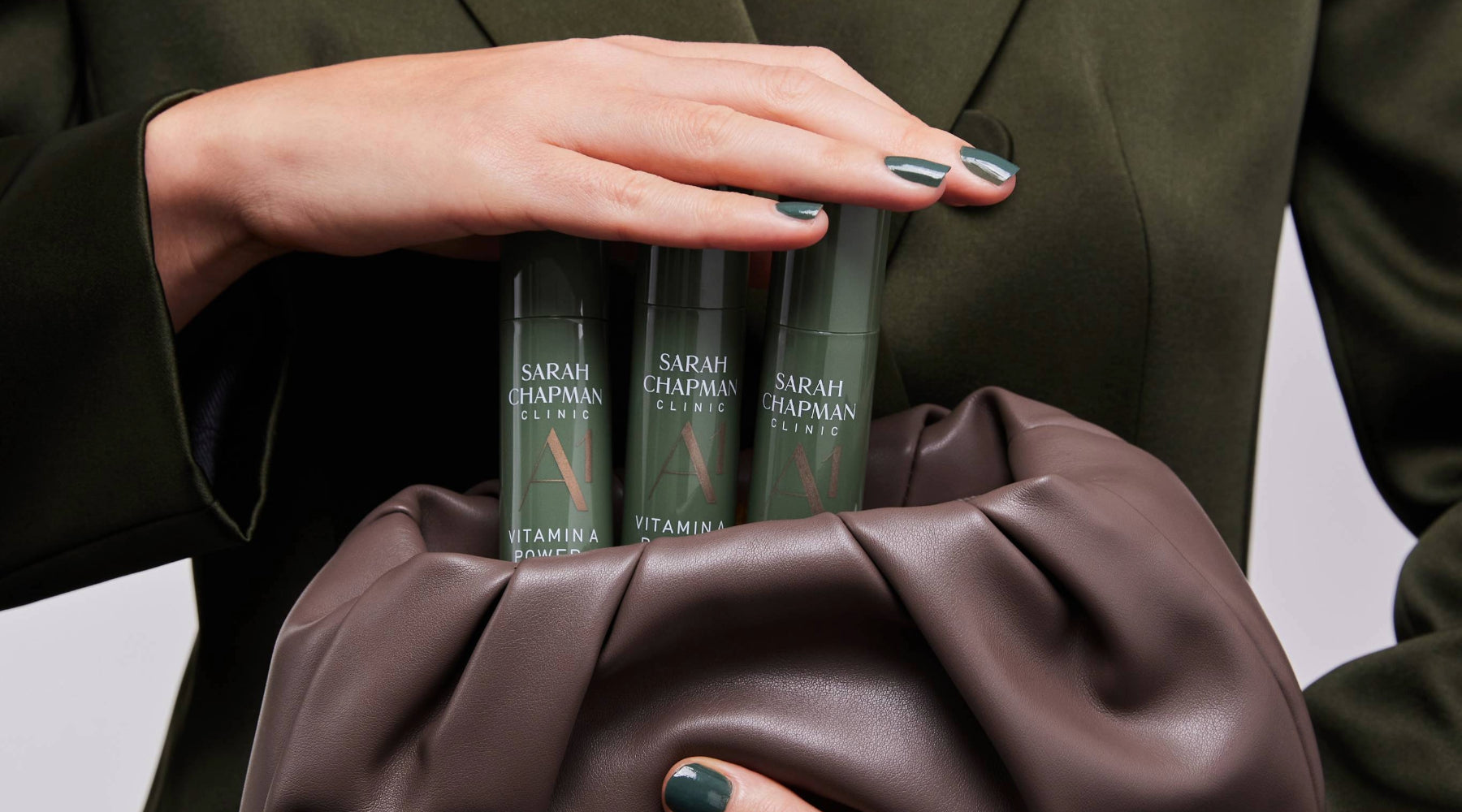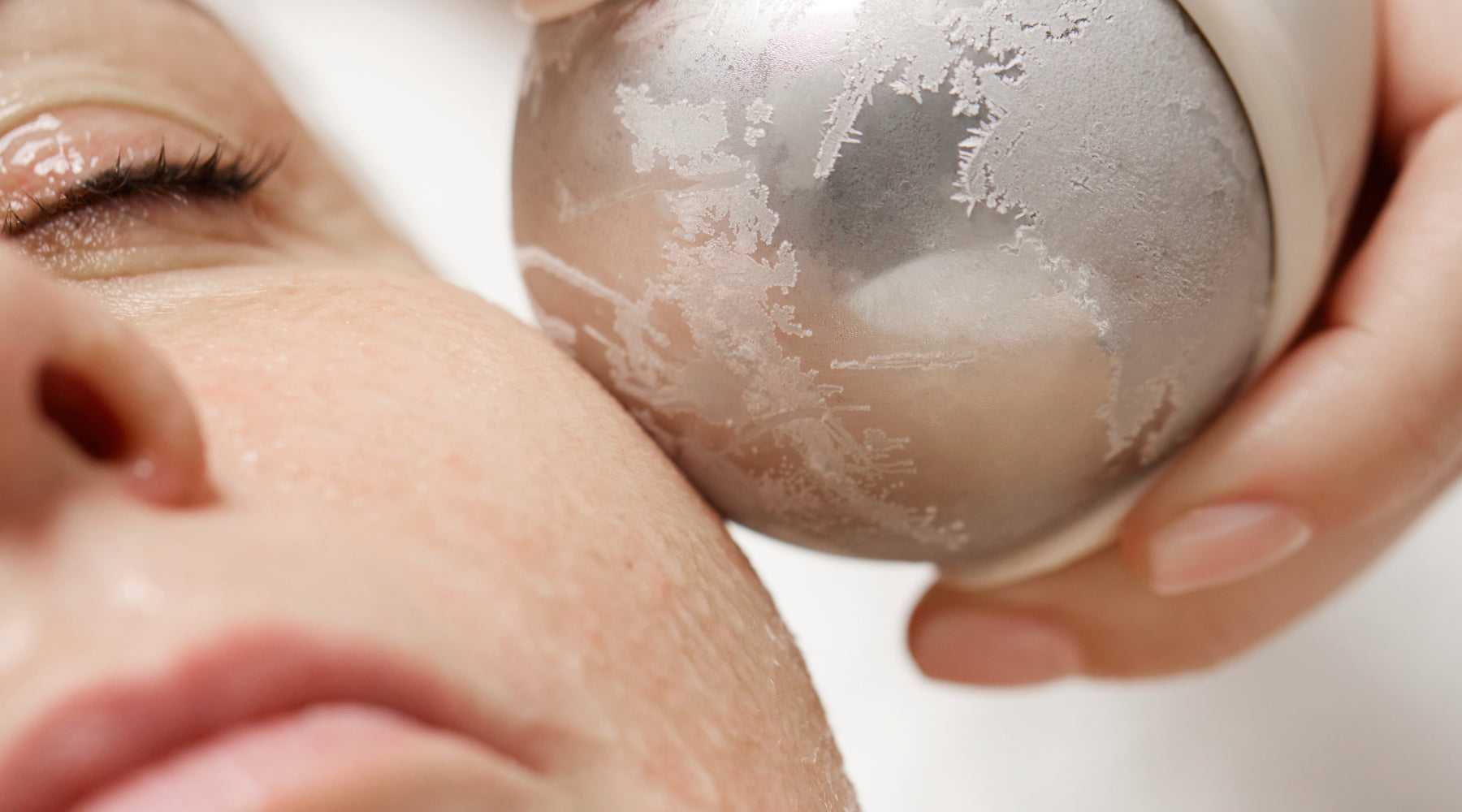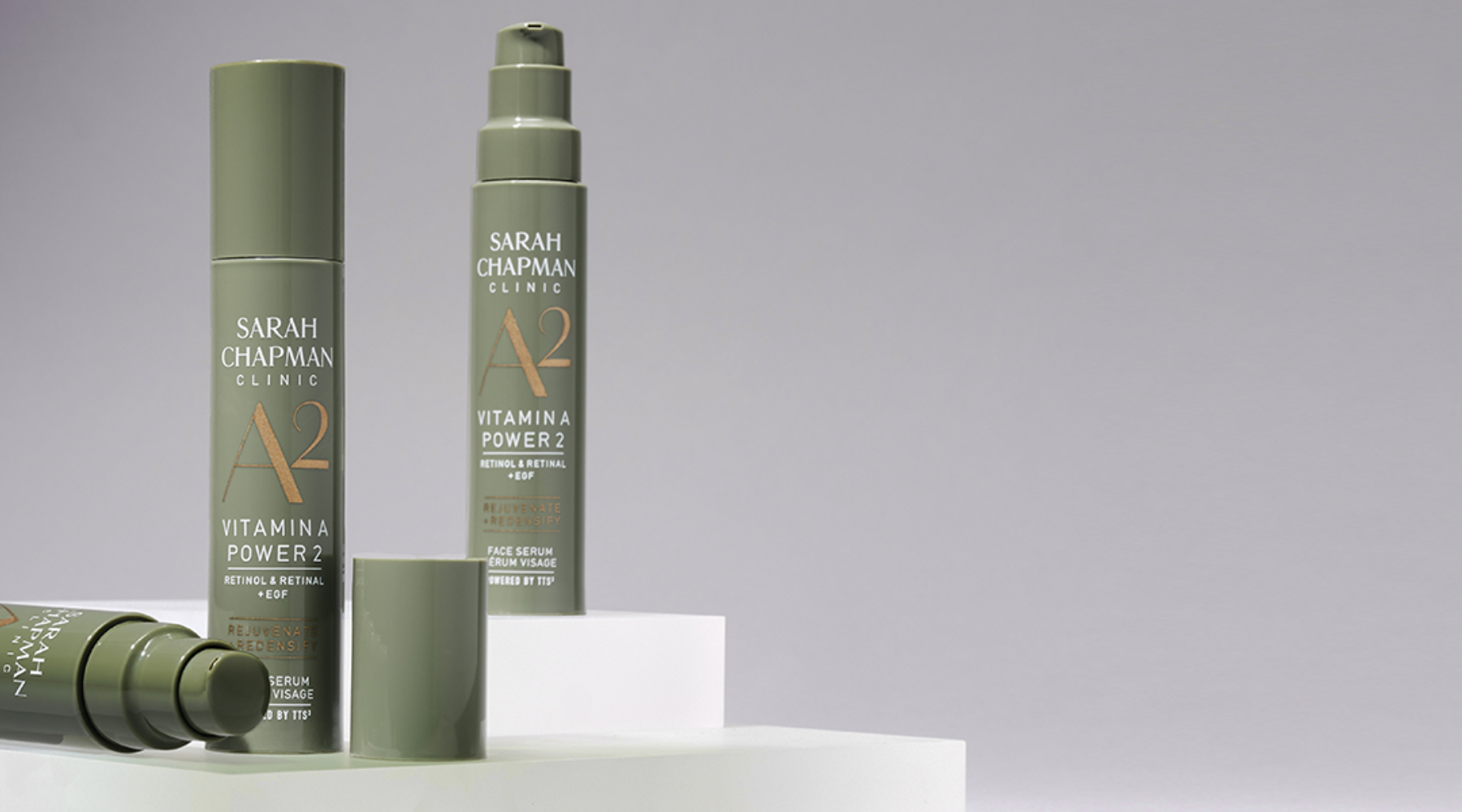
Ingredient Insights: Retinal, Retinol & Other Retinoids
Likely to be mistaken for its more ubiquitous sibling, Retinol, Retinal (with an ‘a’) – or Retinaldehyde – has recently risen to new ranks of prestige and popularity within the skincare community. It’s no wonder why: acting faster on the skin than its predecessor and boasting the potential to yield better results, this vitamin A derivative promises an easy ‘step up’ in potency for long-time Retinol devotees. It has also found favour with more sensitive skin types due to reported lower risks of irritation (but more on that later).
Created in collaboration with our clinic’s expert team of therapists, this article aims to shed new light on Retinal and how it fares against other forms of vitamin A used in our range. At the end of this article, you’ll know how to tell your Retinyl Palmitate from your Retinol; the best technology and ingredient pairings to boost the benefits of these Grade-A ingredients; and the dos and don’ts of application to avoid aggravating the skin.

THE TRIED-AND-TESTED POWER OF VITAMIN A
There’s a reason vitamin A is one of our most used active ingredients – simply put, it's proven to work.
“I am a huge fan of vitamin A – I use it every day on both myself and my clients. Vitamin A is in nearly all my existing formulas.”
– Sarah Chapman
Like vitamin C and hyaluronic acid, vitamin A is naturally found in the skin, degrading daily partly due to exposure to UVA and UVB rays, heat, light and air. As a result, your skin’s vitamin A levels naturally decline over time, making you more susceptible to wrinkles, blemishes and scarring. Since your body cannot produce it naturally, this ingredient has to be supplemented internally and topically, and this is where retinoids come into play. "They help speed up skin renewal, boost collagen, and tackle issues like wrinkles and breakouts, making your complexion smoother and healthier over time.", our clinic team explains.
KNOW YOUR RETINOIDS, MASTER YOUR ROUTINE
While Retinol is often used as an umbrella term for products containing some form of vitamin A, it’s actually part of a larger family of compounds that we refer to as retinoids – or vitamin A derivatives.
There are several retinoids to choose from, and they vary based on how long it takes each one to convert to retinoic acid, the active molecule in the skin and the strongest form of vitamin A (only available on prescription from a GP or Dermatologist). Although it's extremely effective and fast-acting, retinoic acid can cause extreme irritation, redness and peeling. Luckily, over-the-counter retinoids such as the ones in our range offer a great alternative.

Retinyl Esters like Retinyl Palmitate (a key ingredient in Overnight Facial) are the mildest of our retinoids, taking three steps to convert to Retinoic Acid. This helps mitigate issues around irritation since the active is gradually delivered, making them suitable for more sensitive or reactive skin. "Most skin types can use retinoids, but sensitive skin should start with milder forms or lower doses.", recommends our clinic team.
Retinol, in turn, takes two steps to convert to Retinoic Acid. This makes it stronger than Retinyl Esters but potentially more sensitising on the skin's surface, which is why we use advanced encapsulation that reduces risks of irritation. Our Platinum Stem Cell Elixir, for instance, is formulated with a Cyclosystem Complex® in which Retinol is micro-encapsulated in cyclodextrins for superior efficacy and a more controlled release.
Finally, we use Retinal in both our Icon and Clinic ranges. Though it's technically stronger than Retinol, "some people find retinal gentler because it needs fewer steps to become active, so you often use less product", explains one of our therapists. The use of cutting-edge ingredient encapsulation and biotechnology can also be behind this interesting paradox. Take our A1 serum, for example; although it combines Retinol with Retinal, users in our clinical trials all reported that their skin was able to tolerate A1 with no signs of irritation after 2 weeks of daily use. Magic? No – it's all thanks to our Triple Technology System (TTS³), which includes a type of biomimetic encapsulation adapted from medicine to dermo-cosmetics.
RETINOIDS 2.0: SMART FORMULATIONS & INGREDIENT PAIRINGS
When formulating with retinoids or any other potent actives, we always strive to ensure the resulting product is as kind to skin as possible while still delivering visible results. To achieve just that, Sarah and our product development team look at alternative ways of boosting the efficacy of actives instead of simply ramping up their concentrations, which can increase chances of irritation and other unwanted side effects.
Sarah's ultimate goal? To get closer to the benefits of retinoic acid through safe, easy-to-use formulas.
For A1, risks of irritation have been greatly reduced via three technologies: a pharma-proven form of encapsulation called 'Deep Delivery System'; a lamellar emulsion with a natural affinity with the skin to improve penetration; and unique ingredient synergy with EGF Peptide Growth Factor. On top of prolonging Retinol and Retinal's effects on the skin, EGF boosts skin hydration, helping to counteract the dryness that can occur with retinoids.
A1, however, was not the first time we've paired vitamin A with specific ingredients that enhance and complement its benefits. Our Icon Day cream, for instance, couples Retinal and Retinyl Linoleate with peptides and hyaluronic acid, while Age-Repair Serum features both Retinyl Palmitate and vitamin C. "Ingredients like peptides and hydrators (like hyaluronic acid) can help boost vitamin A’s effects and soothe skin. Antioxidants (e.g. vitamin C) also complement it by defending against environmental damage.", says a Skinesis Clinic therapist.
RULE OF THUMB: "Start Slowly"
If you're new to retinoids, our team suggests starting with a low-strength product, using it "less often at first before you gradually increase frequency to let your skin adapt." While all our formulas are carefully calibrated to allow for easy routine building with safe but effective ingredient concentrations, it's important to patch-test each product and gradually introduce potent actives into your routine to build up your skin's tolerance.
"Retinoid reactions are not uncommon. The key is to start slowly and be considerate in your choice of product. It's really critical to ensure retinoid stability, concentration and skin-supporting ingredients are present in your formulations."
– Sarah Chapman
To avoid aggravating the skin and disrupting the skin barrier, beginners should also be careful when combining retinoids with other strong actives, especially exfoliants like AHAs and BHAs. These are powerful resurfacing ingredients, so they can be overly aggressive when layered with retinoids. Instead, alternate the days you apply each one and complement them with soothing, barrier-fortifying formulas. Our ceramide-rich Comfort Cream D-stress and nourishing Ultimate Cleanse cleansing balm are great options for retinoid beginners, promoting healthy moisture levels and targeting signs of dryness and redness.
Worried about the 'retinol purge'? According to our therapists, there is nothing to fear. While it's understandably frustrating, this side effect is "usually temporary and subsides once your skin adjusts.", with retinoids speeding up your skin's cell turnover, which can cause breakouts or peeling as older cells and debris come to the surface.
THE BOTTOM LINE & 5 QUICK-FIRE QUESTIONS
Whether you're worried about premature fine lines, uneven texture or stubborn dark spots, retinoids are one of the most effective ingredients you can incorporate into your routine. For best results, start slowly and opt for well-formulated products that harness their well-studied effects while minimising the risk of irritation.
1. Why are retinoids so important for great skin health?
They help speed up skin renewal, boost collagen, and tackle issues like wrinkles and breakouts, making your complexion smoother and healthier over time.
2. Can they be used by all skin types, including sensitive skin? Are there any exceptions?
Yes, most skin types can use retinoids, but sensitive skin should start with milder forms or lower doses. Generally, pregnant or breastfeeding individuals should check with a doctor first. Otherwise, just patch-test and go slow if you’re prone to irritation.
3. Is there any truth to the so-called ‘retinol purge’ What causes this reaction?
Retinol can speed up skin cell turnover, causing breakouts or peeling as older cells and debris come to the surface. It’s usually temporary and subsides once your skin adjusts.
4. What are some common mistakes people make when applying retinoids?
Common mistakes include using too much or too often at first, skipping moisturizer, and not using sunscreen. Mixing it with strong exfoliants or other actives at the same time can also irritate skin.
5. Are there ways to minimise the risk of irritation and even avoid it altogether?
Start with a low-strength product, use it less often at first, and layer with soothing products (like moisturizers and gentle cleansers). Gradually increase frequency to let your skin adapt.







